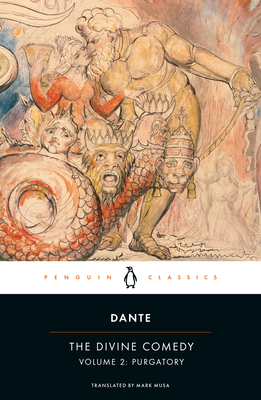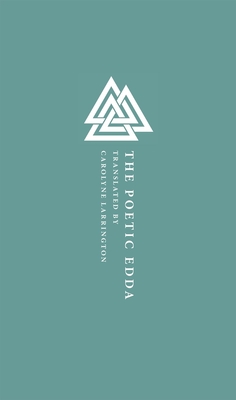








Havamal, or the Ballad of the High One, is the major work of Norse wisdom literature. In one of the key poems in the Poetic Edda we find the counsel of Odin himself. Advice for wanderers, proverbial wisdom, love advice, accounts of Odin's quest after the runes and the mead of poetry, and various spells and incantations fill out this marvellous poem, at once archaic and down to earth. The present translation is in the original alliterative verse, and through it the Allfather's true voice comes howling out of the wind-tossed tree where he hung for nights full nine.
Fleshing out this collection are selections of wisdom poetry from elsewhere in the Poetic Edda and from Völsunga Saga, as well as 150 ancient saws and proverbs from a wide cross-section of Norse sagas. This is the definitive anthology of the wisdom of the ancient Northmen.

A rich anthology of pre-Islamic and early Islamic poetry on the beauties and perils of the hunt
In the poems of Fate the Hunter, many of them translated into English for the first time, trained cheetahs chase oryx, and goshawks glare from falconers' arms, while archers stalk their prey across the desert plains and mountain ravines of the Arabian peninsula. With this collection, James E. Montgomery, acclaimed translator of War Songs by ʿAntarah ibn Shaddād, offers a new edition and translation of twenty-six early works of hunting poetry, or ṭardiyyāt. Included here are poems by pre-Islamic poets such as Imruʾ al-Qays and al-Shanfarā, as well as poets from the Umayyad era such as al-Shamardal ibn Sharīk. The volume concludes with the earliest extant epistle about hunting, written by ʿAbd al-Ḥamīd al-Kātib, a master of Arabic prose. Through the eyes of the poet, the hunter's pursuit of the quarry mirrors Fate's pursuit of both humans and nonhumans and highlights the ambiguity of the encounter. With breathtaking descriptions of falcons, gazelles, and saluki gazehounds, the poems in Fate the Hunter capture the drama and tension of the hunt while offering meditations on Fate, mortality, and death. An English-only edition.




Beowulf is the product of a profoundly religious imagination, but the significance of the poem's Christianity has been downplayed or denied altogether. The Word-Hoard Beowulf is the first translation and popular commentary to take seriously the religious dimension of this venerable text. While generations of students know that Beowulf represents a confluence of Christianity and paganism, this version-informed by J. R. R. Tolkien's theory of language as the repository of myth-opens the hood to track the poem's inner religious workings. It brings to light the essential Old English vocabulary, incorporating into the translation the divine titles used for God, specific names for evil and nonhuman creatures, and the precise language employed for providence and fate, along with terminology for kinship and heroism. Such features are not found in any other modern English translation, including Tolkien's, whose text was never intended for publication. The Word-Hoard Beowulf draws upon Tolkien's ideas and commentaries, however, to render a poem whose metaphysical vision takes front and center, delivering a richly restorative version of this early medieval masterpiece. The text is preceded by an introduction detailing the poem's religious motivations and cultural context, and is accompanied by an expansive commentary. In short, this version allows readers to perceive precisely how in Beowulf (as Tolkien puts it) the new Scripture and the old tradition touched and ignited to produce the earliest English epic.

RITONA is pleased to announce the publication of And If I Go With Child?: Re-imagining the Mysteries of Tam Lin, by poet Charlotte Hussey.
'His boneless fingers bendto conjure newborn shapesfrom perturbed clouds of matter, a slippery, pink brood they fallall around, or from me?I wake, hands crossedover my heart.'Through twenty-seven poems, Charlotte Hussey explores the initiatory potential of the ancient Scottish faery story, The Ballad of Tam Lin.
The ballad tells the tale of a woman's haunting encounter with a figure trapped by the Faerie Queen. In And If I Go With Child?, Charlotte Hussey becomes the story itself, and speaks beautifully in her poems of the power of redemptive love.



The Lady of Shalott
Alfred Tennyson
A Victorian Ballad
The poem is loosely based on the Arthurian legend of Elaine of Astolat, as recounted in a thirteenth-century Italian novella titled Donna di Scalotta (No. LXXXII in the collection Cento Novelle Antiche); the earlier version is closer to the source material than the latter. Tennyson focused on the Lady's isolation in the tower and her decision to participate in the living world, two subjects not even mentioned in Donna di Scalotta.
The Lady of Shalott is a Victorian ballad by the English poet Alfred, Lord Tennyson (1809-1892). Like his other early poems - Sir Lancelot and Queen Guinevere, and Galahad - the poem recasts Arthurian subject matter loosely based on medieval sources. Tennyson wrote two versions of the poem, one published in 1833, of 20 stanzas, the other in 1842, of 19 stanzas.

Dante Alighieri was early in recognizing that our age has a problem. His hometown, Florence, was at the epicenter of the move from the medieval world to the modern. He realized that awareness of divine reality was shifting, and that if it were lost, dire consequences would follow. The Divine Comedy was born in a time of troubling transition, which is why it still speaks today.
Dante's masterpiece presents a cosmic vision of reality, which he invites his readers to traverse with him. In this narrative retelling and guide, from the gates of hell, up the mountain of purgatory, to the empyrean of paradise, Mark Vernon offers a vivid introduction and interpretation of a book that, 700 years on, continues to open minds and change lives.

The Mabinogion are the earliest prose stories of the literature of Britain. The stories were compiled in Middle Welsh in the 12th-13th centuries from earlier oral traditions. The collection covers eleven prose stories of widely different types, offering drama, philosophy, romance, tragedy, fantasy and humour. There is a classic hero quest, Culhwch and Olwen; a historic legend in Lludd and Llefelys, complete with glimpses of a far off age; and other tales portray a very different King Arthur from the later popular versions.
Scholars from the 18th century to the 1970s predominantly viewed the tales as fragmentary pre-Christian Celtic mythology, or international folklore. Since the 1970s an understanding of the integrity of the tales has developed, with investigation of their plot structures, characterisation, and language styles. They are now seen as a sophisticated narrative tradition, both oral and written, with ancestral construction from oral storytelling, and overlay from Anglo-French influences. It was Lady Charlotte Guest in 1838-45 who first published the full collection, bilingually in Welsh and English. The tales continue to inspire new fiction, dramatic retellings, visual artwork, and research.
This case laminate collector's edition includes a Victorian-inspired dust jacket.
